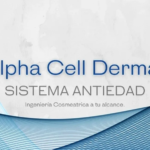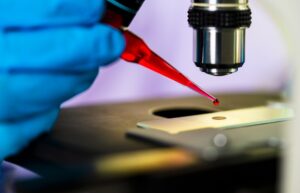Hyperpigmentation is a common skin condition characterized by darkened patches of skin. It’s a prevalent issue that affects many people, leading them to seek effective skin hyperpigmentation treatment in Singapore and other parts of the world. This condition can affect anyone, regardless of skin type or color, and can be caused by a variety of factors. In this article, we’ll explore the causes and types of hyperpigmentation and delve into the treatments available, with a special focus on Pico Laser therapy.
Causes of Hyperpigmentation
Sun Exposure
One of the primary causes of hyperpigmentation is excessive sun exposure. Ultraviolet (UV) rays can trigger an overproduction of melanin, the pigment responsible for skin color. This often results in the development of sunspots or age spots, particularly in areas frequently exposed to the sun.
Hormonal Changes
Hormonal fluctuations, particularly during pregnancy, can lead to melasma, a type of hyperpigmentation. This condition is more common in women and is often referred to as the “mask of pregnancy.”
Inflammation
Post-inflammatory hyperpigmentation (PIH) occurs following skin injury or inflammation. Common causes include acne, cuts, and burns. PIH typically appears as dark or discolored spots where the skin has healed from an injury.
Medical Conditions
Certain medical conditions and medications can also lead to hyperpigmentation. For example, Addison’s disease can cause increased pigmentation in both exposed and unexposed skin areas.
Types of Hyperpigmentation
Sunspots
Also known as liver spots or solar lentigines, sunspots are small, darkened patches of skin caused by sun exposure. They are commonly found on the face, hands, and other areas frequently exposed to the sun.
Melasma
Melasma is characterized by dark, irregular patches commonly found on the forehead, cheeks, and upper lip. It is more prevalent in women, especially during pregnancy or when taking oral contraceptives.
Post-Inflammatory Hyperpigmentation
This type of hyperpigmentation occurs in areas of the skin that have healed from an injury or inflammation. It’s common in people who have had severe acne or other skin injuries.
Treatments for Hyperpigmentation
Topical Treatments
Several over-the-counter and prescription topical treatments can help lighten hyperpigmented areas. These include products containing hydroquinone, kojic acid, retinoids, and vitamin C. While effective, these treatments require consistent application and can take several months to show significant results.
Pico Laser: A Revolutionary Approach
Pico Laser stands out as an effective skin hyperpigmentation treatment in Singapore and worldwide. This advanced laser technology works by delivering ultra-short pulses of energy to the skin. Unlike traditional lasers, Pico Laser doesn’t rely on heat to destroy pigment cells. Instead, it uses high-energy waves to shatter the pigment particles, which the body then naturally eliminates.
How Pico Laser Works
Pico Laser emits laser light in picoseconds (trillionths of a second), targeting the melanin in hyperpigmented areas. These ultra-fast pulses create a photomechanical effect, breaking down the melanin into tiny particles. The body’s lymphatic system then naturally removes these particles, leading to a gradual fading of the pigmented spots.
Benefits of Pico Laser Treatment
Pico Laser therapy offers several benefits for treating hyperpigmentation:
- Effectiveness: It’s known for its efficiency in treating various types of hyperpigmentation, including stubborn cases.
- Minimal Discomfort: The treatment is relatively painless compared to traditional laser therapies.
- Quick Sessions: Each session is quick, usually completed in under 30 minutes.
- Fewer Sessions Required: Patients often see results in fewer sessions compared to other laser treatments.
- Minimal Downtime: There’s little to no downtime, allowing patients to return to their daily activities immediately.
Conclusion
Hyperpigmentation is a diverse and complex skin condition, but advancements in treatments like Pico Laser offer hope for those seeking an effective skin hyperpigmentation treatment in Singapore and elsewhere. While topical treatments are a good starting point, Pico Laser stands out for its efficiency, speed, and minimal discomfort. As with any medical treatment, it’s essential to consult with a qualified dermatologist to determine the best course of action for your specific skin type and condition. With the right treatment, hyperpigmentation can be effectively managed, restoring the skin’s natural beauty and confidence in one’s appearance.

















+ There are no comments
Add yours